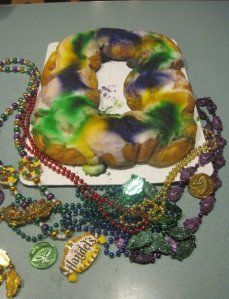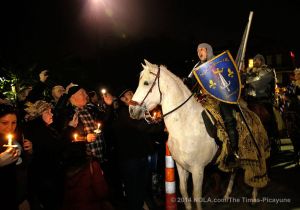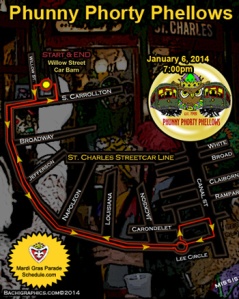Today is the Epiphany, which for Catholics marks the end of the Advent/Christmas season. Trees on the curb by December 26th notwithstanding. The period following the Feast of the Baptism of the Lord (the Sunday following Epiphany) and the beginning of Lent is called Ordinary Time in the liturgical calendar. So church-wise, there will not be a whole lot going on.
However, in New Orleans and in most Catholic-infused cultures, Epiphany marks both the end of Christmas and the beginning of the Carnival season; that is, the season ending with Mardi Gras or Fat Tuesday, the day of celebration before Ash Wednesday and the solemnity of Lent. So Christmas candles are replaced by King Cakes, while shopping and gift-giving and caroling are replaced by dances, masked balls, and parades.
So today, in addition to the first King Cakes of the Carnival season (Haydel’s Bakery had Uber delivering them all day), there was the Joan of Arc parade in the French Quarter. And Uptown, the Phunny Phorty Phellows commandeered the St. Charles streetcar line for an evening of frivolity. And as is true every year, this is just the beginning. Goodbye Christmas; welcome to Carnival.





